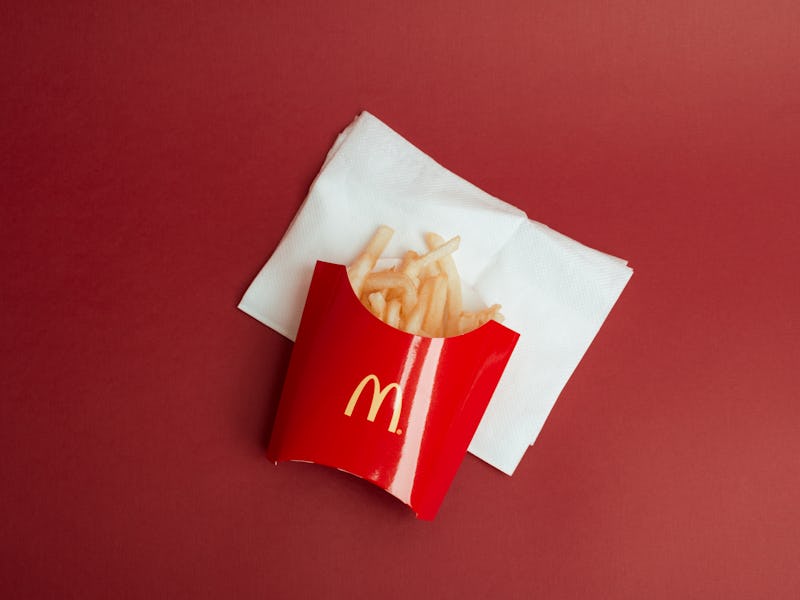In Defense of Much-Maligned Ultra-Processed Foods
Hear us out.

Ultra-processed foods, a label coined in research by a Brazilian pediatrician, have been targeted as a menace to society for quite some time, mostly by environmental advocates and health professionals.
For most consumers, the distinction between processed foods and ultra-processed foods is a matter of individual perception. Many consumers recognize that ultra-processed foods contain additives and artificial ingredients, yet there’s confusion about processing, since all foods that are processed become associated.
Few have dared to counter the argument that ultra-processed foods are bad for us, and the massive movement against them has clearly influenced public policy around the world. At home, for example, Canada’s Food Guide recommends staying away from ultra-processed foods.
However, the socio-economic implications of discouraging consumers from purchasing and consuming these products have been under-appreciated, for the most part. There’s been scant attention paid to how wages have failed to keep pace with our lifestyles, the gender gap in the division of unpaid labor, and the pressure on women to keep up with an unrealistic and idealized version of motherhood in arguments against processed foods.
Nearly a decade ago, the value of processed foods suddenly came under great scrutiny. Consumers not only began to question the value of processed foods, but they also feared these foods contributed to chronic non-communicable diseases, even cancer. It became a common perception that processed foods contributed, at the very least, to unhealthy dietary patterns.
The frozen pizza — is it really so bad?
However, the past 40 years has also seen an exponential rise in women entering or returning to the workforce — nearly 70 percent of households in Canada are dual-income, leaving much less time for families to focus on home cooking. At the same time, wages have stagnated, failing to keep pace with cost-of-living increases, squeezing families financially. These financial and time burdens on families are felt more acutely by women, with 68.6 percent feeling that they don’t have enough time in the day, yet the division of unpaid labor hasn’t kept pace with gender balance in the labor market.
Cuts Costs, Saves Time
Processed foods allow consumers to save both time and money. Acquiring these products means less time in the kitchen. Families with fewer means often have less spare time since they work longer hours for less pay or hold multiple jobs to make ends meet.
Decades ago, hours of cooking was required to prepare three meals a day for a family of four, and, of course, women were largely responsible. Processed foods have allowed the same family to accomplish the same task in exponentially less time. In order words, the narrative suggesting that ultra-processed foods should be outlawed completely overlooks the contribution that food science has made for more than a century now.
Suggesting that families spend more time preparing home-cooked meals without considering the implications on already overburdened women is also sexist since most of the cooking in most households is still done by women.
The media has also put undue pressure on women to be perfect mothers, even as many of them work full-time, leading to stress and burnout. Indeed, pressures to eat “clean” and keep a picture-perfect house while maintaining an environmentally conscious household and an aura of complete happiness is as unrealistic as it is ridiculous.
Processed food has made an undeniably significant contribution to our food systems. And it’s had other, largely forgotten benefits — it protects us against post-harvest loss and has ensured food availability year around.
Most consumers may not know that processing reduces waste and has made foods like dairy and wheat edible and palatable. These foods enhance food quality, remove potential innate toxins, and improve nutrient bio-availability. Most importantly, processing adds nutrients and supplies food to the population that improves public health.
Rising Obesity Rates
Studies have associated rising obesity rates with the consumption of processed or ultra-processed foods. While these observations are largely correct, most have not demonstrated, beyond a reasonable doubt, a clear causational relationship between the two.
Potato chips are an example of an ultra-processed food that lacks nutritional benefits.
Ultra-processed foods may play a part in an unhealthy lifestyle but cannot be considered the main contributor. In fact, there is a stronger association in the United States between obesity rates and income inequality than there is between obesity rates and ultra-processed foods. Oversimplified analytics can lead to damaging conclusions, where access to nutritional information, level of food insecurity, and cultural approaches to food consumption all contribute to the food choices of consumers.
Food processors have certainly marketed awful products, including hydrolyzed margarine, diet soda, and ready-made products containing high sodium content in an effort to offer more convenience to consumers. But they’re now more attuned to current market trends. Many new, healthy products are available, such as yogurt and kefir containing probiotics, sea greens, and plant-based protein products. The trend suggests food processors are listening to consumers.
Eating well requires us to go back to the basics: choose smaller portions, eat fruits and vegetables, eat whole grains, help yourself to a balanced portfolio of proteins, and sometimes enjoy a donut — occasionally, but not every day.
The dialogue on ultra-processed foods in recent years has stigmatized many food products and branded an entire sector of the food industry as reckless. But many processed foods, from cheese to cereals and canned goods, are healthy and provide much-needed nutrients to consumers pressed for time and money.
Processed foods are a viable way of improving nutritional profiles and nutrient intakes, and food processors have made great strides in ensuring quality nutritious products over the last few years. So let’s stop discriminating against ultra-processed foods and ease up on those who turn to them for reasons of time, convenience, and affordability.
This article was originally published on The Conversation by Sylvain Charlebois and Janet Music. Read the original article here.